
The Mystical Al Wahbah Crater: Saudi Arabia's Natural Wonder
Discover the awe-inspiring Al Wahbah Crater in Saudi Arabia, where geological wonders and desert landscapes converge to create an unforgettable travel experience.
Nestled in the western region of Saudi Arabia, Al Wahbah Crater is a geological marvel that beckons adventure seekers and nature lovers alike. This massive crater, with a diameter of 2 kilometers and a depth of 250 meters, is a stunning testament to the raw power of nature. Formed either by volcanic activity or a meteoric impact, the crater is surrounded by stark desert landscapes, making it a surreal sight to behold. The journey to Al Wahbah Crater is an adventure in itself. As you travel through the vast expanse of the Arabian Desert, the anticipation builds until you reach the rim of the crater. The view is nothing short of breathtaking, with the white crystalline floor of the crater contrasting sharply with the dark, rugged edges. For those looking to explore further, a hike down to the crater floor offers a closer look at the unique salt deposits and the chance to experience the sheer scale of this natural wonder. Beyond its geological significance, Al Wahbah Crater holds cultural and historical importance. Local legends speak of the crater being created by a star that fell from the sky, adding an air of mystique to the site. Whether you're an avid photographer, a geology enthusiast, or simply someone in search of a unique travel experience, Al Wahbah Crater promises an unforgettable adventure.
Local tips in Al Wahbah Crater
- Visit during the cooler months (October to April) to avoid the extreme heat.
- Bring plenty of water and snacks, as there are no facilities nearby.
- Wear sturdy hiking shoes if you plan to trek down to the crater floor.
- Start your hike early in the morning to take advantage of cooler temperatures.
- Consider hiring a local guide for an informative and safe visit.
The Mystical Al Wahbah Crater: Saudi Arabia's Natural Wonder
Nestled in the western region of Saudi Arabia, Al Wahbah Crater is a geological marvel that beckons adventure seekers and nature lovers alike. This massive crater, with a diameter of 2 kilometers and a depth of 250 meters, is a stunning testament to the raw power of nature. Formed either by volcanic activity or a meteoric impact, the crater is surrounded by stark desert landscapes, making it a surreal sight to behold. The journey to Al Wahbah Crater is an adventure in itself. As you travel through the vast expanse of the Arabian Desert, the anticipation builds until you reach the rim of the crater. The view is nothing short of breathtaking, with the white crystalline floor of the crater contrasting sharply with the dark, rugged edges. For those looking to explore further, a hike down to the crater floor offers a closer look at the unique salt deposits and the chance to experience the sheer scale of this natural wonder. Beyond its geological significance, Al Wahbah Crater holds cultural and historical importance. Local legends speak of the crater being created by a star that fell from the sky, adding an air of mystique to the site. Whether you're an avid photographer, a geology enthusiast, or simply someone in search of a unique travel experience, Al Wahbah Crater promises an unforgettable adventure.
When is the best time to go to Al Wahbah Crater?
Iconic landmarks you can’t miss
Wabah Crater
Discover the breathtaking Wabah Crater, a stunning geological marvel and historical landmark nestled in the heart of Saudi Arabia's desert landscape.
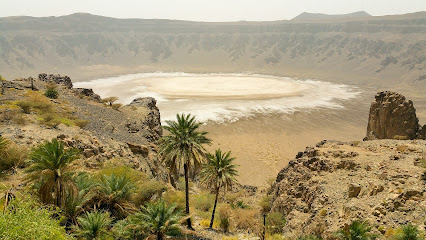
Al-Wa'bah Crater
Explore the stunning Al-Wa'bah Crater, a geological marvel and historical landmark in Saudi Arabia, perfect for adventure and photography.

Wabah Crater Hiking Trail
Explore Wabah Crater Hiking Trail, a stunning destination for nature lovers and hikers seeking adventure in breathtaking landscapes.

Wabah Crater Visitor Center
Explore the incredible Wabah Crater Visitor Center—your gateway to one of Saudi Arabia's most stunning natural wonders, rich in geological history.

Wabah Mountain
Experience the breathtaking beauty and unique geology of Wabah Mountain, a stunning national reserve in Saudi Arabia perfect for nature lovers and adventure seekers.

الفوهات السبع - حَلاة المستظلة
Unveil the serene beauty of Al-Fuhat Al-Sab', a picturesque tourist attraction in Saudi Arabia offering stunning nature and rich cultural experiences.

هجرة ابوكعب القديمة
Explore هجرة ابوكعب القديمة, a captivating tourist attraction that unveils the rich history and stunning landscapes of Saudi Arabia's ancient heritage.

Khabb al Mudawwah
Discover the stunning ravine of Khabb al Mudawwah, a natural wonder in Saudi Arabia offering breathtaking views and outdoor adventures.

Wahabah Volcanic Crater - Mj Great Outdoors
Explore the breathtaking Wahabah Volcanic Crater, a stunning natural wonder in Saudi Arabia offering adventure, beauty, and unique geological features.

Unmissable attractions to see
Wabah Crater
Discover the breathtaking Wabah Crater, a stunning geological site in Saudi Arabia that offers rich history, serene landscapes, and unforgettable adventures.

Wabah Crater Hiking Trail
Discover the awe-inspiring Wabah Crater Hiking Trail, a stunning destination for outdoor enthusiasts in Saudi Arabia's mesmerizing desert landscape.

الفوهات السبع
Explore the enchanting landscapes and rich heritage of Al-Fuhat Al-Sabea, a must-visit tourist attraction in Saudi Arabia, offering breathtaking views and cultural experiences.

Harrat Kishb volcanic field
Explore the breathtaking Harrat Kishb volcanic field in Saudi Arabia, a stunning natural wonder filled with unique geological formations and rich history.

Wabah Mountain
Discover the breathtaking beauty and rich history of Wabah Mountain National Reserve, a hidden gem in Saudi Arabia's stunning landscapes.

الفوهات السبع - حَلاة المستظلة
Experience the cultural richness and stunning landscapes of Al-Fuhat Al-Sab’a, a hidden tourist gem in Saudi Arabia, perfect for explorers and nature lovers.

الفوهات السبع - حَلاة أم الجَلَم الشمالية
Experience the tranquility of the Seven Fountains in Jeddah, where nature and beauty converge for an unforgettable escape.

الفوهات السبع - حَلاة أم الأرْشِيَة
Explore the beauty of Al-Fuhat Al-Sab' in Saudi Arabia, a serene tourist attraction blending nature and history for an unforgettable experience.

كهف cave
Explore the stunning geological wonders of Kehf Cave in Hafir Kishb, a mesmerizing tourist attraction in Saudi Arabia.

الفوهات السبع - حَلاة أم الجَلَم الجنوبية
Discover the stunning landscapes and rich culture of Al-Fawhat Sabaa - Hala Umm Al-Jalam, a hidden gem in southern Saudi Arabia, perfect for nature lovers and culture seekers.

Secondary View
Discover breathtaking panoramic views at the Secondary View observation deck in Hafir Kishb, Saudi Arabia. A must-visit for nature lovers and photographers.

خبراء نياب
Uncover the beauty and cultural richness of خُبَراء نِيَاب, a captivating tourist attraction in Al Moyhiyah, Saudi Arabia.

Lake with fruits
Explore the serene beauty of Lake with Fruits, a tranquil oasis of nature and vibrant fruit trees in Saudi Arabia's stunning landscape.

Wabah Crater Main View
Discover the stunning vistas and geological wonders at Wabah Crater Main View, a must-see observation deck in Hafir Kishb, Saudi Arabia.

Jeddah Crater
Discover the geological wonder of Jeddah Crater, a breathtaking natural attraction showcasing the Earth's volcanic history in Saudi Arabia.

Essential places to dine
Bharat Restaurant Indian Kitchen
Discover the authentic taste of India at Bharat Restaurant Indian Kitchen in Al Hofuf – where every meal is a celebration of flavor.

Bujairi Terrace
Experience fine dining at Bujairi Terrace while enjoying stunning views of Riyadh's skyline in a vibrant atmosphere.

Fifth Season
Experience authentic Middle Eastern flavors at Fifth Season in Al Bahah—where culinary excellence meets warm hospitality.

Topaz Restaurant & Cafe
Experience the exquisite flavors and elegant ambiance at Topaz Restaurant & Cafe in Al Hofuf - a culinary gem for every food lover.

دار بسمة | Dar Basma
Experience authentic Saudi Arabian cuisine at Dar Basma in Al Hofuf – where tradition meets taste in a charming setting.

Applebee’s
Experience the best of American cuisine at Applebee’s in Al Jubail – where every meal feels like home.

Tandoori House Restaurant
Discover the rich flavors of India at Tandoori House Restaurant in Al Jubail, where vibrant cuisine meets warm hospitality.

Casper & Gambini's
Discover health-conscious dining at Casper & Gambini's in King Abdullah Economic City—where fresh ingredients meet innovative flavors.

Little Caesars Pizza! Pizza! !ليتل سيزرز بيتزا! بيتزا
Savor delicious pizzas at Little Caesars in Al Baha – perfect for quick bites or takeaway with family and friends.

Altopiano
Experience authentic Sicilian and Southern Italian cuisine at Altopiano in Diriyah's historic Al Bujairi district.
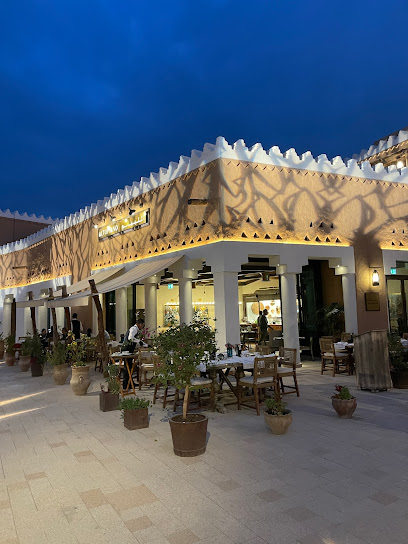
Asmahan Restaurant
Experience authentic Lebanese cuisine at Asmahan Restaurant in Al Khobar – where flavors meet hospitality.
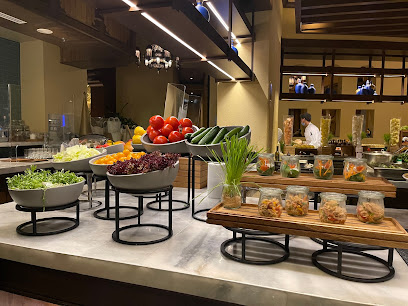
Cafe De L’ Esplanade
Experience the charm of French cuisine at Café De L’ Esplanade in Diriyah – where elegance meets exceptional flavors.
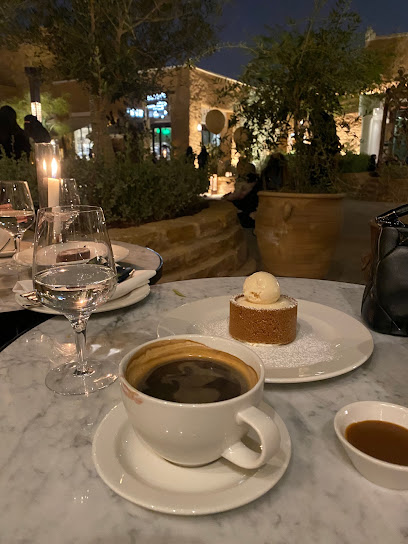
Salvaje Restaurant
Experience authentic Japanese cuisine at Salvaje Restaurant in Dhahran – where tradition meets innovation in every delicious dish.

Long Chim
Experience authentic Thai cuisine at Long Chim in Al Bujairi, Riyadh - where traditional flavors meet modern elegance.

Al Diwan Lebanese Restaurant
Experience authentic Lebanese cuisine at Al Diwan Restaurant in Al Jubail - where every meal tells a flavorful story.

Markets, malls and hidden boutiques
Al-Wa'bah Crater
Explore Al-Wa'bah Crater, a stunning volcanic landmark showcasing nature's artistry in the heart of Saudi Arabia.

هايبر العواد ماركت
Discover the vibrant flavors of Saudi Arabia at هايبر العواد ماركت, your gateway to local cuisine and culture in Umm Aldoom.

Al Bashaer Markets
Explore Al Bashaer Markets in Umm Aldoom for fresh produce, local snacks, and an authentic taste of Saudi Arabian culture.

محلات مشحن أبوعبيد
Explore محلات مشحن أبوعبيد in Al Salhaniyah for top-quality auto parts and exceptional customer service.

Al-Wa'bah Crater Visitor Center
Explore the Al-Wa'bah Crater Visitor Center, a gateway to one of Saudi Arabia's most stunning natural geological formations.

سوق المويهية
Explore Al Moyhiyah Shopping Mall: A vibrant shopping and dining destination full of local culture and modern flair.

ديوانية الديرة للقهوة العربية
Discover the rich flavors of authentic Arabic coffee at Deyrat Al-Dira, a cozy coffee shop celebrating local traditions.

بقالة
Discover the local flavors and vibrant atmosphere of بقالة, your go-to supermarket in Hafir Kishb, rich in culinary delights and everyday essentials.

ناجي للذبايح
Explore authentic Saudi Arabian flavors at ناجي للذبايح, your go-to store in Hafir Kishb for fresh meats and culinary delights.

عين الغزال للعبايات الراقيه
Discover the elegance of Saudi fashion at عين الغزال للعبايات الراقيه, where tradition meets modernity in exquisite abayas.

عطاره كيف العرب أم الدوم
Discover the rich culture and vibrant shopping experience at عطارة كيف العرب أم الدوم in Umm Aldoom, where tradition meets modernity.

Al Mamlakah Mills & Spices
Explore the vibrant world of spices at Al Mamlakah Mills & Spices, where Middle Eastern culinary traditions come to life.

matjar aleiwad lilmawad alghidhayiya
Discover the ultimate shopping experience at Matjar Aleiwad Lilmawad Alghidhayiya, where local charm meets modern retail in Umm Aldoom.

بقالة العازمي
Experience the authentic tastes of Saudi Arabia at بقالة العازمي, a local grocery store brimming with fresh produce and traditional flavors.

ابداع لك ولنا
Explore the vibrant department store ابداع لك ولنا in Um Al Gheyran for a unique shopping experience filled with local treasures.

Essential bars & hidden hideouts
Al-Wa'bah Crater
Discover the breathtaking Al-Wa'bah Crater, a geological marvel and historical landmark in the heart of Saudi Arabia, perfect for nature lovers and adventurers.

مطعم ریف المهد (پاکستانی ہوٹل)
Experience the rich flavors of Pakistan at مطعم ریف المهد, a must-visit restaurant in Mahd Al Thahab for delicious traditional dishes.
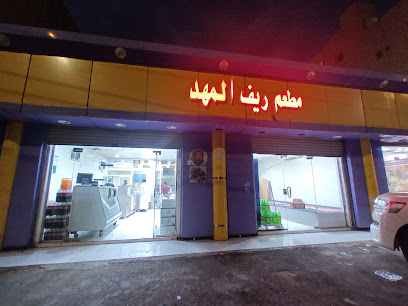
مطعم باب الديره
Experience authentic local flavors at مطعم باب الديره, a must-visit restaurant in Umm Aldoom offering a warm atmosphere and delectable cuisine.

Mecca High Way Hotel
Experience the authentic flavors of Middle Eastern cuisine at Mecca High Way Hotel, a culinary gem for travelers in New Muwayh.

سماق
Savor the authentic taste of shawarma at سماق, a must-visit restaurant in Mahd adh Dhahab, perfect for food lovers seeking local flavors.

Fawal Kishb restaurant
Discover authentic local cuisine at Fawal Kishb restaurant in Hafir Kishb, where rich flavors meet warm hospitality.

رمانه كوفى شوب
Experience the rich flavors and warm ambiance of رمانه كوفى شوب, a culinary gem in Umm Aldoom, perfect for every food lover.

عصيرات الامانة
Discover the flavors of Umm Aldoom at عصيرات الأمانة, where fresh ingredients meet traditional culinary artistry.

مطعم المذاق العدني
Experience the authentic taste of Yemen at مطعم المذاق العدني, where every dish tells a story of rich culinary tradition.

Matam mandi
Experience authentic Asian cuisine at Matam Mandi in Daghbag, where every dish tells a story of rich culinary tradition.

Zavi Fahad Gasar
Discover authentic Saudi flavors at Zavi Fahad Gasar in Um Al Gheyran, where traditional dishes meet warm hospitality.
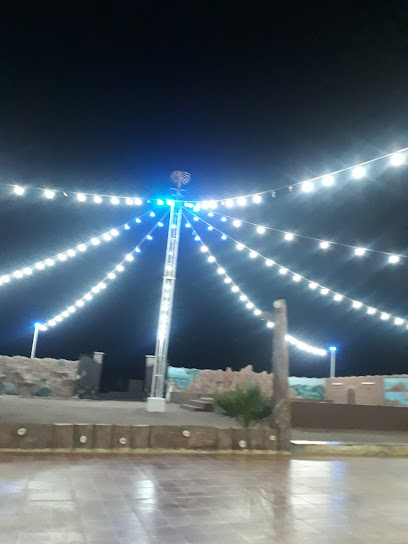
بوفية وكافتيريا رمانة
Savor the authentic flavors of local cuisine at بوفية وكافتيريا رمانة in Daghbag, a perfect dining spot for tourists exploring the region.

مطعم أسماك شباره
Savor the freshest seafood delights at مطعم أسماك شباره in Umm Aldoom, where every dish tells a story of oceanic flavor and culinary passion.

مركز عونك للخدمات البتروليه
Discover convenience at مركز عونك للخدمات البتروليه, your essential stop for fuel, repairs, and dining in دغيبحه.

Boofiya
Experience authentic local cuisine at Boofiya, a charming restaurant in New Muwayh, where every dish tells a story of flavor and tradition.

Local Phrases about Al Wahbah Crater
-
- Helloمرحبا
[marhaban] - Goodbyeوداعا
[wadaean] - Yesنعم
[naam] - Noلا
[la] - Please/You're welcomeمن فضلك
[min fadlik] - Thank youشكرا لك
[shukran lak] - Excuse me/Sorryعذرا
[athar] - How are you?كيف حالك؟
[kayfa halak?] - Fine. And you?بخير. وأنت؟
[bikhayr. wa ant?] - Do you speak English?هل تتحدث الإنجليزية؟
[hal tatahadath al'injilia?] - I don't understandلا أفهم
[la afham]
- Helloمرحبا
-
- I'd like to see the menu, pleaseأرغب في رؤية القائمة، من فضلك
[urghub fi ru'ya alqaimah, min fadlik] - I don't eat meatأنا لا آكل اللحوم
[ana la aakil allahum] - Cheers!في صحتك!
[fi sahtak!] - I would like to pay, pleaseأرغب في الدفع، من فضلك
[urghub fi aldaf', min fadlik]
- I'd like to see the menu, pleaseأرغب في رؤية القائمة، من فضلك
-
- Help!النجدة!
[alnajdah!] - Go away!اذهب بعيدا!
[idhab baeedan!] - Call the Police!اتصل بالشرطة!
[itassil bialshurta!] - Call a doctor!اتصل بالطبيب!
[itassil bialtabib!] - I'm lostلقد ضللت الطريق
[laqad dalalt altariq] - I'm illأنا مريض
[ana mareed]
- Help!النجدة!
-
- I'd like to buy...أرغب في شراء...
[urghub fi shira...] - I'm just lookingأنا فقط أتفرج
[ana faqat atfarij] - How much is it?كم سعرها؟
[kam si'raha?] - That's too expensiveهذا غالي جدا
[hatha ghali jiddan] - Can you lower the price?هل يمكنك خفض السعر؟
[hal yumkinuk khifd alsi'ra?]
- I'd like to buy...أرغب في شراء...
-
- What time is it?كم الساعة؟
[kam alssaa'ah?] - It's one o'clockالساعة الواحدة
[alssaa'ah alwahidah] - Half past (10)الساعة العاشرة والنصف
[alssaa'ah al'ashirah walnusf] - Morningالصباح
[alssabah] - Afternoonبعد الظهر
[baed aldhuhur] - Eveningالمساء
[almasa] - Yesterdayأمس
[ams] - Todayاليوم
[alyawm] - Tomorrowغدا
[ghadan] - 1واحد
[wahid] - 2اثنان
[ithnayn] - 3ثلاثة
[thalatha] - 4أربعة
[arbaa] - 5خمسة
[khamsa] - 6ستة
[sitta] - 7سبعة
[sabaa] - 8ثمانية
[thamania] - 9تسعة
[tisa] - 10عشرة
[ashara]
- What time is it?كم الساعة؟
-
- Where's a/the...?أين...؟
[ayn...?] - What's the address?ما هو العنوان؟
[ma hu al'unwan?] - Can you show me (on the map)?هل يمكنك أن تريني (على الخارطة)؟
[hal yumkinuk 'an tureeni (ealaa alkhartah)?] - When's the next (bus)?متى يأتي الحافلة التالية؟
[mata yati alhafilat altaliat?] - A ticket (to ....)تذكرة (إلى ...)
[tadhkirat (ealaa ...)]
- Where's a/the...?أين...؟
History of Al Wahbah Crater
-
Al Wahbah Crater, also known as Maqlaʿ Ṭamiyyah, is a volcanic crater located in the Hejazi region of Saudi Arabia. It was formed due to volcanic activity, specifically a phreatomagmatic eruption, which occurs when groundwater comes into contact with hot lava. The explosion created a massive crater, measuring approximately 2 kilometers in diameter and 250 meters in depth.
-
Before the advent of Islam, the area surrounding Al Wahbah Crater was inhabited by various tribes. These tribes often ascribed mystical and supernatural significance to the crater, believing it to be a place where divine and earthly realms intersected. Archaeological evidence suggests that the crater might have been a site for ritualistic practices.
-
During the Islamic era, the crater continued to hold cultural significance. Local folklore often depicted the crater as the result of a tragic love story between two mountains, Tamia and Qatan. According to the legend, Tamia, a mountain, fell in love with Qatan, another mountain, and leaped across the desert to join him. However, she fell short and crashed into the ground, creating Al Wahbah Crater.
-
In the early 20th century, Al Wahbah Crater was rediscovered by Western explorers and scientists. Charles Huber, a French explorer, was one of the first Westerners to document the site in 1883. Since then, the crater has attracted geologists, volcanologists, and tourists interested in its unique geological features.
-
Al Wahbah Crater has been the subject of numerous scientific studies due to its unique geological formation. Researchers have conducted extensive surveys to understand the crater's origin, mineral composition, and the role of groundwater in its formation. These studies have contributed significantly to the field of volcanology and have provided insights into similar geological structures worldwide.
-
In recent years, Al Wahbah Crater has become a popular tourist destination, drawing visitors from around the world. The Saudi Arabian government has taken steps to promote sustainable tourism and conservation efforts to preserve the crater's natural beauty and geological significance. Trails, signs, and viewing platforms have been established to enhance the visitor experience while minimizing environmental impact.
Al Wahbah Crater Essentials
-
Al Wahbah Crater is located in the Hejazi region of Saudi Arabia, approximately 250 kilometers away from the city of Taif. The nearest major airport is Taif Regional Airport (TIF). From the airport, you can rent a car or hire a taxi to drive to the crater, which takes around 3 to 4 hours. There are no direct public transportation options to the crater, so arranging for private transportation is essential.
-
Given the remote location of Al Wahbah Crater, renting a car is the most convenient option for reaching and exploring the area. Ensure your vehicle is suitable for desert travel and well-maintained. While there are no formal public transport services to the crater, local tour operators occasionally offer guided trips from Taif and other nearby cities. Make sure to fuel up and carry extra supplies, as there are limited facilities along the way.
-
The official currency in Saudi Arabia is the Saudi Riyal (SAR). Credit cards are widely accepted in cities, but when traveling to remote areas like Al Wahbah Crater, it is advisable to carry enough cash for any unforeseen expenses. There are no ATMs or banking facilities near the crater, so ensure you have sufficient funds before leaving urban areas.
-
Al Wahbah Crater is generally safe for tourists. However, it is essential to take standard precautions such as not venturing alone into the desert, especially at night, and informing someone about your travel plans. Be mindful of the extreme temperatures and ensure you have adequate water, food, and emergency supplies. There are no specific high-crime areas targeting tourists, but always be cautious of your surroundings and personal belongings.
-
In case of an emergency, dial 997 for medical emergencies or 999 for police assistance in Saudi Arabia. It is advisable to have travel insurance that covers medical emergencies. The nearest medical facilities are in Taif, so carry a well-equipped first aid kit. For minor issues, ensure you have over-the-counter medications as pharmacies are not available near the crater.
-
Fashion: Do dress modestly, adhering to local customs. Lightweight, long-sleeved clothing is recommended for sun protection. Avoid wearing revealing clothing. Religion: Do respect Islamic traditions and practices. Avoid loud behavior and maintain decorum, especially during prayer times. Public Transport: Do be respectful and follow local etiquettes if using tour operator services. Public transport is not available directly to the crater. Greetings: Do greet people with a formal 'Assalamu Alaikum' (peace be upon you). A handshake is also appropriate. Eating & Drinking: Do carry sufficient food and water. Respect local dining customs, and avoid eating or drinking in public during Ramadan.
-
To truly experience Al Wahbah Crater like a local, consider visiting during the cooler months (October to March). Sunrise and sunset offer the most stunning views and are the best times for photography. Engage with local guides who can provide insightful information about the crater's geology and history. Bring a picnic and enjoy the serene environment, but ensure you leave no trace and take all your litter with you.
Nearby Cities to Al Wahbah Crater
-
Things To Do in Mecca
-
Things To Do in Medina
-
Things To Do in Jeddah
-
Things To Do in Al Baha
-
Things To Do in Yanbu
-
Things To Do in Buraidah
-
Things To Do in Hail
-
Things To Do in Al Ula
-
Things To Do in Abha
-
Things To Do in Khamis Mushait
-
Things To Do in Riyadh
-
Things To Do in Najran
-
Things To Do in Marsa Alam
-
Things To Do in Jizan
-
Things To Do in Tabuk





